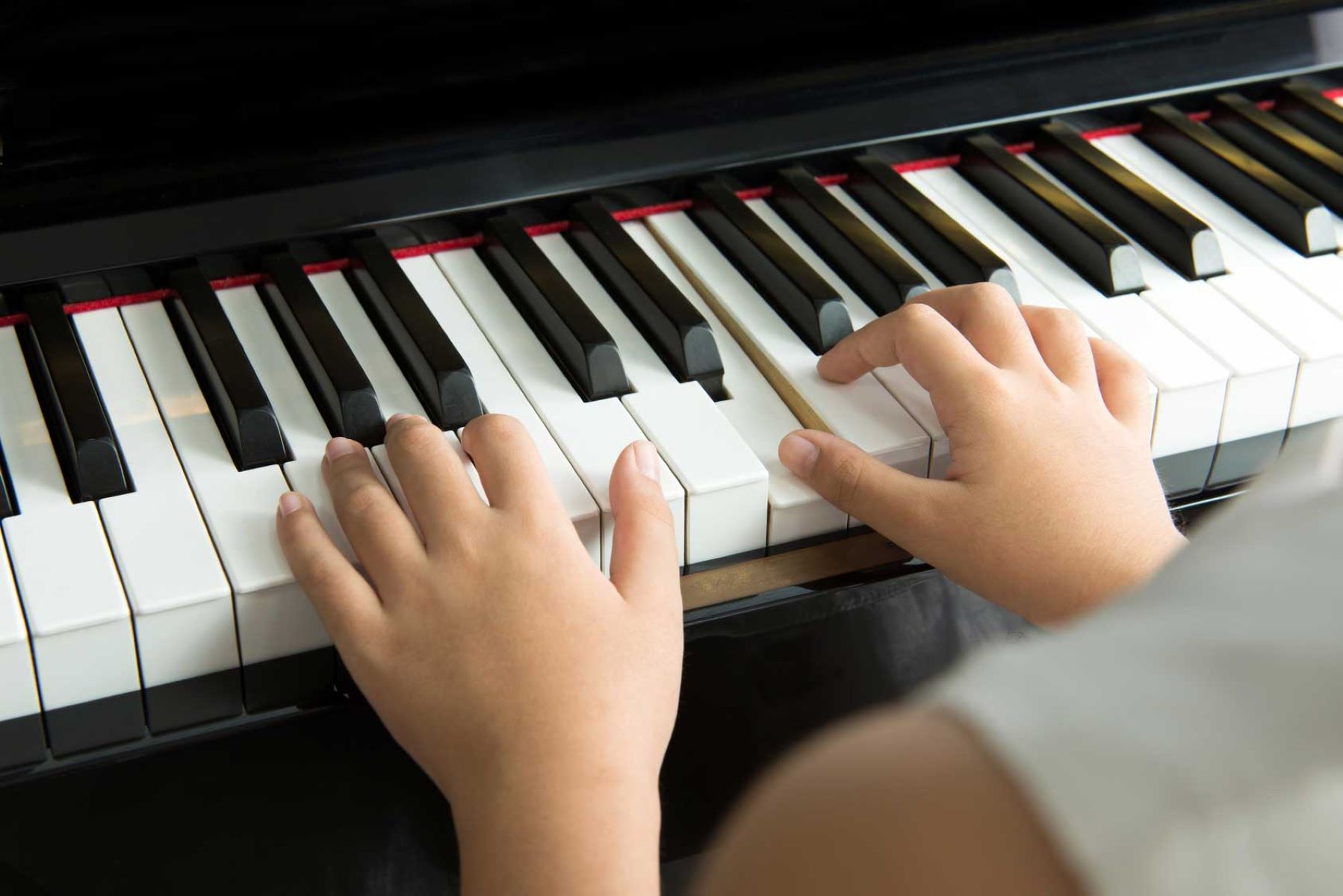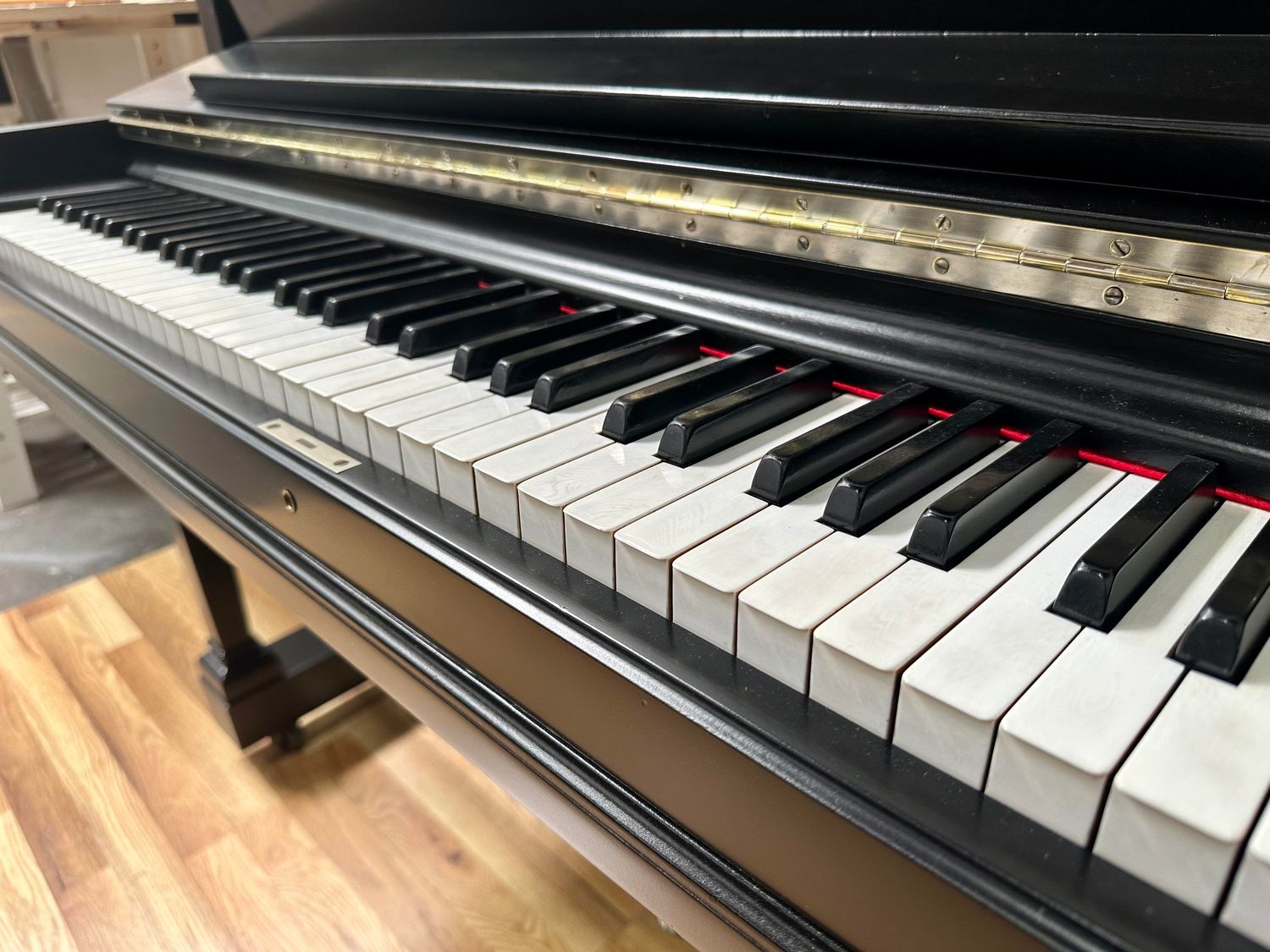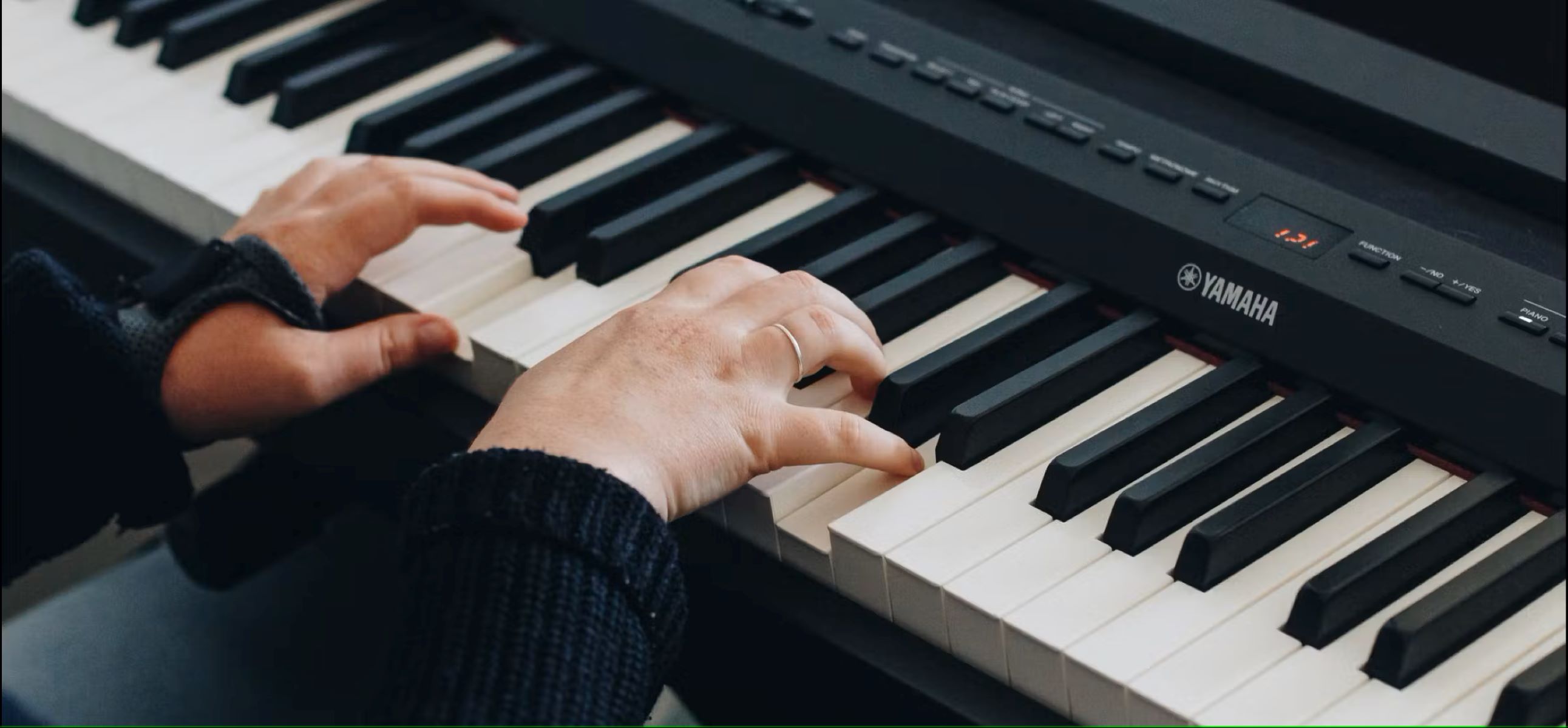Home>Instruments>Piano>How To Play Piano With A Book


Piano
How To Play Piano With A Book
Modified: February 10, 2024
Learn to play piano with ease using a comprehensive book. Master the art of piano playing with step-by-step instructions and practice exercises. Unlock your musical potential today!
(Many of the links in this article redirect to a specific reviewed product. Your purchase of these products through affiliate links helps to generate commission for AudioLover.com, at no extra cost. Learn more)
Table of Contents
Introduction
Playing the piano is a rewarding and enriching experience that allows individuals to express themselves through music. Whether you're a beginner or have some experience, using a book as a learning tool can be incredibly beneficial. It provides structured guidance, a wealth of knowledge, and a sense of progression as you advance through the lessons.
Learning to play the piano with a book can be an enjoyable and fulfilling journey. It offers a systematic approach to mastering the instrument, covering essential topics such as music notation, finger positions, and technique. Additionally, a well-crafted piano book provides a diverse range of songs, allowing you to explore various musical styles and genres.
In this guide, we will explore the process of playing the piano with a book, from selecting the right learning material to honing your skills and expanding your repertoire. Whether you're embarking on this musical endeavor for personal enjoyment or aspiring to become a proficient pianist, the information provided here will serve as a valuable resource on your musical odyssey. So, let's delve into the world of piano playing and discover the wonders of learning with a book.
Choosing the Right Book
When venturing into the realm of piano playing, selecting the appropriate learning material is crucial to your success. The right book can significantly impact your learning journey, providing clear instruction, engaging content, and a suitable level of difficulty.
Consider the following factors when choosing a piano book:
- Skill Level: Assess your current proficiency to determine whether you require a beginner, intermediate, or advanced level book. It’s essential to select a book that aligns with your skill level to ensure a balanced learning experience.
- Learning Style: Some books are designed for self-study, while others may be tailored for use with a piano teacher. Identify your preferred learning style and choose a book that complements your approach.
- Musical Preferences: Whether you’re drawn to classical, jazz, pop, or other genres, opt for a book that features music styles you enjoy. This will keep you motivated and enthusiastic about practicing.
- Comprehensive Content: Look for a book that covers essential aspects such as music theory, technique, sight-reading, and repertoire. A well-rounded curriculum will facilitate a holistic understanding of piano playing.
Exploring reviews and recommendations from experienced pianists or music educators can also guide you in selecting a high-quality book that suits your needs. Additionally, some books offer online resources such as audio tracks, video tutorials, and supplementary materials, enhancing the learning experience.
By carefully considering these factors and conducting thorough research, you can pinpoint a piano book that resonates with your musical aspirations and lays a solid foundation for your learning journey.
Understanding Music Notation
Music notation serves as the language of music, conveying musical ideas and instructions to the performer. As you embark on your piano journey with a book, familiarizing yourself with music notation is fundamental to interpreting and playing the pieces accurately.
Key elements of music notation that you will encounter in a piano book include:
- Staff and Clefs: The staff consists of five lines and four spaces, upon which musical notes and symbols are placed. The treble clef is typically used for the right hand, while the bass clef is employed for the left hand.
- Notes and Rests: Notes represent the pitch and duration of sounds, while rests indicate periods of silence. Understanding the various note values and their corresponding rests is essential for rhythm comprehension.
- Key Signatures and Time Signatures: Key signatures denote the key of the piece and the associated sharps or flats, while time signatures indicate the meter and rhythm of the music.
- Dynamics and Articulations: Dynamic markings such as piano (soft) and forte (loud), as well as articulations like staccato and legato, provide expressive and stylistic indications for playing the music.
As you progress through the book, you will encounter exercises and pieces that gradually introduce and reinforce these notational elements. It’s beneficial to practice identifying and understanding these symbols, as they form the basis for interpreting and performing music accurately.
Many piano books include supplementary sections that delve into music notation in greater detail, offering explanations, visual examples, and exercises to reinforce your understanding. By immersing yourself in the intricacies of music notation, you will develop a strong foundation for reading and interpreting piano music with confidence and proficiency.
Basic Finger Positions
Establishing proper finger positions is fundamental to developing dexterity, agility, and control at the piano. A well-structured piano book will guide you through the essential finger positions, ensuring that you approach the keys with precision and efficiency.
Here are the basic finger positions for both hands:
- Right Hand: The thumb is assigned number 1, followed by the index finger (2), middle finger (3), ring finger (4), and pinky (5).
- Left Hand: The numbering for the fingers is mirrored in the left hand, with the pinky as 1 and the thumb as 5.
As you navigate through the piano book, you will encounter exercises and exercises that focus on finger independence, strength, and coordination. These exercises are designed to familiarize your fingers with the keyboard and develop the necessary muscle memory for fluid and controlled playing.
Additionally, piano books often include finger exercises and patterns that target specific finger combinations, promoting flexibility and evenness in your playing. By diligently practicing these exercises, you can cultivate a strong foundation in finger dexterity, setting the stage for mastering more intricate pieces as you progress.
It’s important to maintain a relaxed hand position while playing, avoiding unnecessary tension in the fingers and wrists. A well-structured piano book will emphasize the importance of proper hand posture and provide guidance on achieving a balanced and relaxed hand position, ultimately enhancing your overall playing technique.
By internalizing and practicing the basic finger positions outlined in the piano book, you will lay a solid groundwork for navigating the keyboard with confidence and proficiency, setting the stage for your musical advancement.
Reading Sheet Music
Sheet music is the blueprint that guides musicians through a piece of music, providing a visual representation of musical elements such as pitch, rhythm, dynamics, and expression. Learning to read sheet music is a crucial skill for any aspiring pianist, and a well-crafted piano book will systematically introduce and reinforce this skill throughout the learning process.
As you delve into the piano book, you will encounter various components of sheet music, including:
- Notes on the Staff: The placement of notes on the staff indicates the pitch of the corresponding sounds, with higher pitches positioned higher on the staff and lower pitches placed lower.
- Rhythmic Notation: The arrangement of notes and rests on the staff conveys the duration and timing of each sound, enabling the performer to maintain a consistent rhythm throughout the piece.
- Key Signatures and Time Signatures: These notational elements provide essential information about the key of the music and its underlying rhythmic structure, guiding the performer’s interpretation and execution.
- Expression Markings: Dynamics, articulations, and other expressive markings enrich the musical interpretation, shaping the overall character and mood of the piece.
Throughout the piano book, you will encounter exercises and musical pieces that gradually introduce and reinforce these elements of sheet music. By consistently practicing and applying your knowledge of sheet music, you will develop a keen understanding of how to interpret and perform a wide range of musical compositions.
Moreover, many piano books include supplemental material dedicated to enhancing sheet music reading skills, offering exercises, sight-reading examples, and tips for efficient music notation comprehension. By immersing yourself in these resources, you can strengthen your ability to interpret and execute sheet music with precision and musicality.
Mastering the art of reading sheet music is a transformative skill that empowers pianists to explore and perform a diverse repertoire with confidence and fluency. As you progress through the piano book, your proficiency in reading sheet music will undoubtedly flourish, enriching your musical journey and expanding your horizons as a pianist.
Practicing with a Book
Effective and consistent practice is the cornerstone of progress and proficiency in piano playing. A well-crafted piano book not only provides valuable learning material but also offers guidance on structuring and optimizing your practice sessions for maximum benefit.
Here are essential elements to consider when practicing with a piano book:
- Structured Exercises: The book will likely include a variety of exercises designed to enhance technique, dexterity, and musical understanding. Engaging with these exercises regularly can reinforce fundamental skills and prepare you for more challenging pieces.
- Incremental Progression: The book is likely to present a progressive sequence of lessons and pieces, each building upon the skills developed in previous sections. Advancing through the book in a systematic manner allows for steady and sustainable growth.
- Focused Repetition: Practicing specific passages or techniques that present difficulty is essential for overcoming challenges and refining your playing. The book may offer targeted exercises to address common technical hurdles.
- Performance Preparation: As you work through the book, you will encounter pieces suitable for performance. Utilize these opportunities to prepare and polish your repertoire, integrating musical expression and technical proficiency.
Furthermore, a piano book may include practice tips, practice schedules, and guidance on efficient practice techniques. These resources can aid in structuring your practice sessions, optimizing your time, and maintaining motivation and focus throughout your musical endeavors.
Consistency and dedication are key components of successful practice. Regularly engaging with the material in the piano book, setting achievable goals, and maintaining a positive and patient mindset will contribute to steady improvement and a deeper connection with the music.
By embracing the practice strategies and resources provided in the piano book, you can cultivate a disciplined and effective practice routine, nurturing your musical growth and fostering a profound appreciation for the art of piano playing.
Improving Technique
Refining and enhancing piano technique is a continual endeavor for pianists of all levels. A comprehensive piano book serves as an invaluable resource for honing technique, offering a structured approach to developing dexterity, control, and expression at the keyboard.
Key elements of technique improvement found in a piano book include:
- Hand Positioning and Posture: The book may provide guidance on achieving optimal hand positioning and posture, emphasizing the importance of relaxation, alignment, and balance while playing.
- Finger Exercises and Drills: Targeted exercises designed to strengthen fingers, improve independence, and enhance agility are commonly featured in piano books. These exercises aim to fortify fundamental finger dexterity and coordination.
- Scales and Arpeggios: Mastery of scales and arpeggios is pivotal for developing technical proficiency and familiarity with different keys. The book may incorporate systematic scale and arpeggio exercises to facilitate comprehensive skill development.
- Articulation and Dynamics: Exploring techniques such as legato, staccato, and dynamic control is essential for shaping musical phrases. The book may offer exercises and pieces that focus on refining these expressive elements.
Engaging with the technical components presented in the piano book through consistent and focused practice is essential for gradual improvement. By integrating these technical exercises into your regular practice routine, you can cultivate a strong foundation in piano technique and pave the way for confident and expressive playing.
Furthermore, the piano book may include detailed explanations and visual aids to elucidate proper technique, fostering a deeper understanding of the physical and mechanical aspects of piano playing. By internalizing these insights, you can refine your approach to the instrument and nurture a more nuanced and refined playing style.
As you diligently immerse yourself in the technical exercises and guidance provided in the piano book, you will witness tangible progress in your playing, experiencing greater control, fluidity, and expressiveness at the keyboard. Embracing the journey of technical refinement is an enriching pursuit that contributes to the artistry and mastery of piano playing.
Learning New Songs
Exploring and mastering new songs is a thrilling aspect of the piano learning journey, and a well-crafted piano book offers a diverse selection of pieces to broaden your musical repertoire. As you delve into the process of learning new songs from the book, you will encounter a range of enriching experiences and opportunities for artistic expression.
Here are key elements to consider when learning new songs from a piano book:
- Varied Musical Styles: A comprehensive piano book typically encompasses a variety of musical genres, including classical, jazz, contemporary, and folk, providing exposure to diverse styles and fostering a well-rounded musical education.
- Technical Challenges: Each new piece presents unique technical challenges, offering opportunities to refine specific skills such as hand independence, dynamic control, and interpretive nuance. Embracing these challenges contributes to holistic skill development.
- Expressive Interpretation: Learning new songs involves delving into the expressive and emotive aspects of music. The piano book may offer insights into interpretive nuances, encouraging you to infuse each piece with personal expression and musical sensitivity.
- Progressive Complexity: The book likely features a progression of pieces that gradually increase in complexity, catering to different skill levels and allowing for continual growth and advancement as a pianist.
As you embark on the journey of learning new songs from the piano book, it is essential to approach each piece with curiosity, patience, and a willingness to delve into its musical and technical intricacies. Engaging with the diverse repertoire presented in the book broadens your musical horizons, nurtures creativity, and cultivates a deeper appreciation for the art of piano playing.
Furthermore, the process of learning new songs fosters resilience, discipline, and a sense of accomplishment as you conquer technical and musical challenges. Each piece mastered from the piano book represents a milestone in your musical growth, reflecting your dedication and passion for the instrument.
By immersing yourself in the exploration and mastery of new songs from the piano book, you will not only expand your repertoire but also deepen your musical understanding, artistic sensibility, and technical prowess, ultimately enriching your experience as a pianist.
Conclusion
Embarking on the journey of piano playing with a well-crafted book as your guide is a transformative and enriching experience. Throughout this guide, we have explored the essential elements of learning and growing as a pianist with the aid of a comprehensive piano book. From selecting the right learning material to honing technique, interpreting sheet music, and mastering new songs, the piano book serves as a valuable companion on your musical odyssey.
As you progress through the book, you will encounter a wealth of knowledge, diverse musical styles, and a systematic approach to skill development. The structured guidance provided within the book empowers you to cultivate a strong foundation in music notation, technique, and expressive interpretation, fostering a deeper connection with the art of piano playing.
Moreover, the process of learning with a piano book nurtures discipline, resilience, and a profound appreciation for the beauty of music. Each practice session, technical exercise, and new piece mastered contributes to your growth as a pianist, shaping your musical identity and artistic sensibility.
Ultimately, the piano book serves as a gateway to a world of musical discovery and self-expression. It fuels your passion for the piano, fosters creativity, and provides a roadmap for continual improvement and artistic fulfillment. Embracing the guidance and resources offered within the book, you embark on a transformative journey that transcends technical proficiency, leading to a deeper understanding of music and a profound connection with the instrument.
As you continue your musical exploration with the piano book as your companion, may you find joy, inspiration, and boundless opportunities for growth and expression. The melodies you bring to life and the stories you tell through your playing are a testament to the profound impact of learning with a book, shaping you into a skilled, sensitive, and impassioned pianist.











